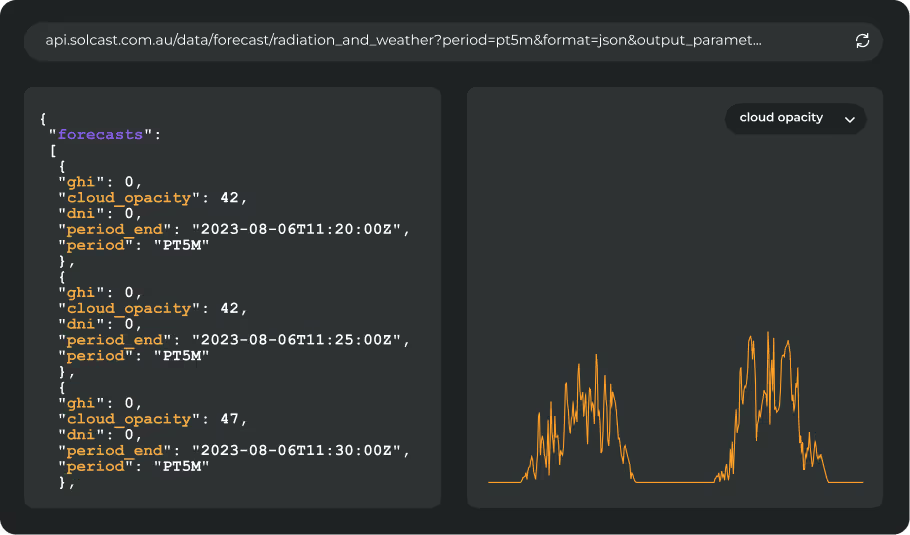Calculating solar irradiance requires many parameters, and is much more complicated than just cloud cover. One often overlooked factor that significantly influences the irradiance and PV power models is aerosols in the atmosphere. It ranks alongside clouds as the top two drivers of solar resource variability. In arid regions, where many large scale solar farms are being built, aerosol even ranks as the top contributor.
However, generic weather services or weather API data often lack proper aerosol treatment, typically assuming average aerosol values at best. This level of data inaccuracy will have an impact on how you plan, manage, and support solar power assets.
Besides tracking clouds at high resolution, Solcast also recognizes the critical role of aerosols in solar energy, and is actively making improvements in aerosol handling.
Why are aerosols important?
Aerosols are tiny particles in the atmosphere, such as dust and pollutants, which interact with sunlight, impacting solar irradiance level on the Earth’s surface. They are able to scatter and absorb incoming solar radiation, which reduces the amount reaching the ground. In the lower atmosphere, they also influence the formation and properties of clouds, such as their size and longevity. As you can see below, from an example location following Canadian wildfires in 2023, aerosols can impact irradiance significantly, particularly in the middle of the day.
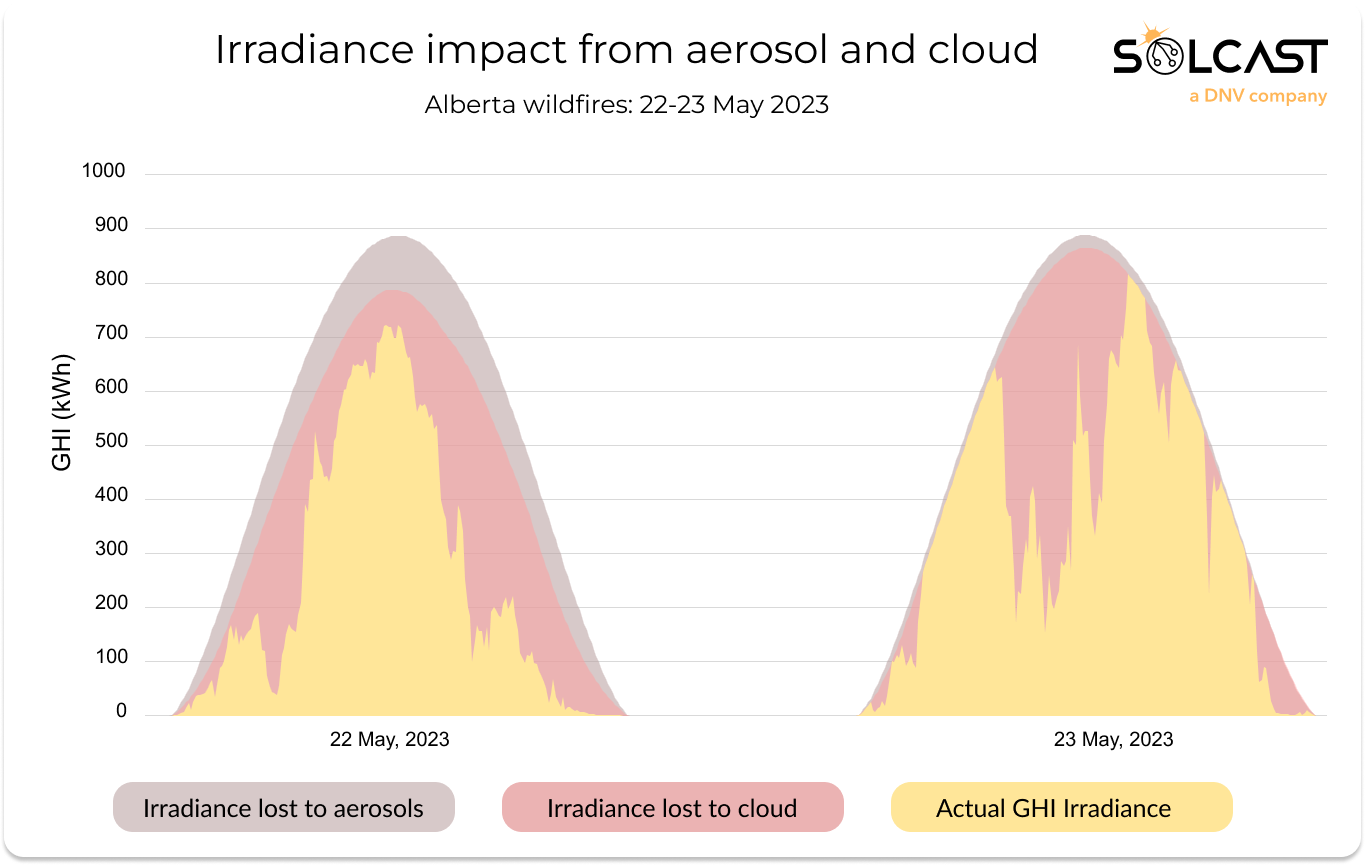
Irradiance impact from aerosol and cloud. Source: Solcast API
Sulphate aerosols are particularly significant in China, largely produced by industrial emissions, transport, and agricultural activities. Winds can carry aerosols like smoke from recent wildfires in Canada or vast amounts of dust from the Sahara Desert over long distances, affecting solar radiation level even far from their sources. The animation below shows the aerosol optical depth in North America over a 72-hour period from September 2nd 2023. The aerosols are caused by wildfires, and are initially concentrated over Canada, before drifting east across the Atlantic ocean.
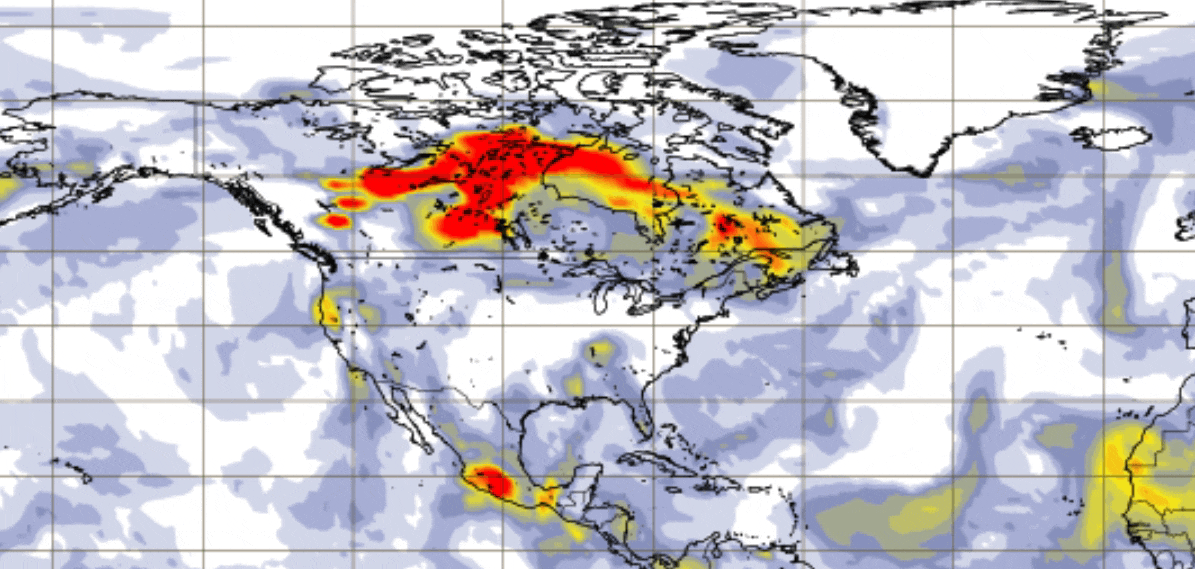
Image source: CAMS
How does Solcast track aerosols to calculate irradiance and PV power data?
Solcast uses specific aerosol models that constantly monitor, assimilate and model a wide range of aerosol types including dust, sea-salt, smoke, volcanic ash and sulphates. These are drawn from NASA's MERRA2 for historical data and ECMWF's CAMS for real-time updates, which are then improved by Solcast through use of machine learning and measurement data from more than 700 ground stations worldwide.
Solcast's aerosol model inputs. Source: Solcast irradiance data methodology
Recent enhancements in aerosol handling enable Solcast to offer even more accurate and dependable irradiance forecasts. You can read more about Solcast’s recent improvements in our recent blog post here.
Aerosols are highly localised, and also have a high dependence on elevation of terrain. That’s why Solcast’s aerosol modelling is done at 5km spatial scales (local aerosols), and then upscaled using terrain to 90 metre resolution. That’s right, 90 metres! Whenever you make an irradiance or PV power request to the Solcast API, the data you get back includes consideration of this aerosols data, along with all Solcast’s other modelling of clouds, irradiance, albedo, soiling, and more.
How is this different from standard weather data?
The value of Solcast's comprehensive aerosol treatment becomes more evident when comparing results to traditional weather model data, which is what generic weather services and weather APIs typically use. In the figure below, we can see the measured irradiance in Sapporo, Japan on a day with high aerosol loading, alongside estimates from Solcast and from a traditional weather model ECMWF ERA5. The high level of aerosols in the atmosphere reduces the amount of irradiance by more than 10% when compared to 48 hours later. With proper treatment of these aerosols, Solcast is 3x more accurate than ERA5 at estimating solar irradiance on this day. This difference, which is in Global Horizontal Irradiance (GHI), becomes much larger when looking at Direct Normal Irradiance (DNI), since DNI is even more sensitive to aerosols than GHI.
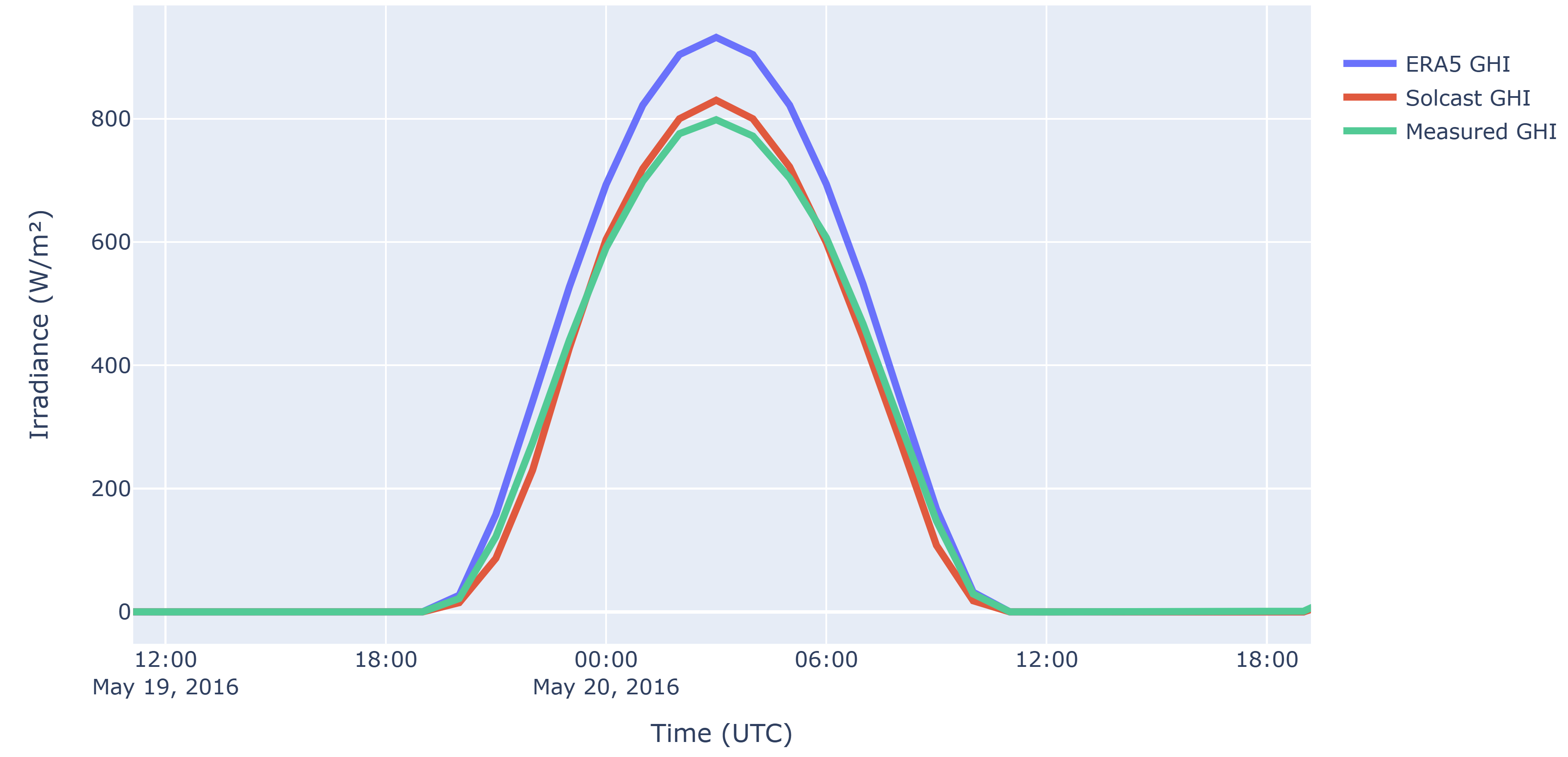
Data comparison of clear-sky curve. Source: Solar API
If you're planning to build, manage, and support a solar PV system, then you could benefit from accurate irradiance data with proper aerosol handling. Connect with our team directly or get started on your evaluation by creating a commercial account in the Solcast Toolkit.








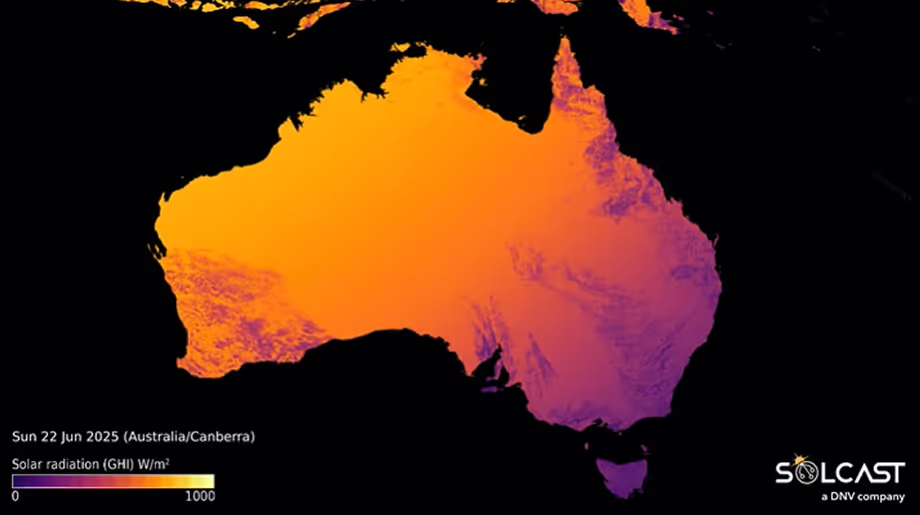
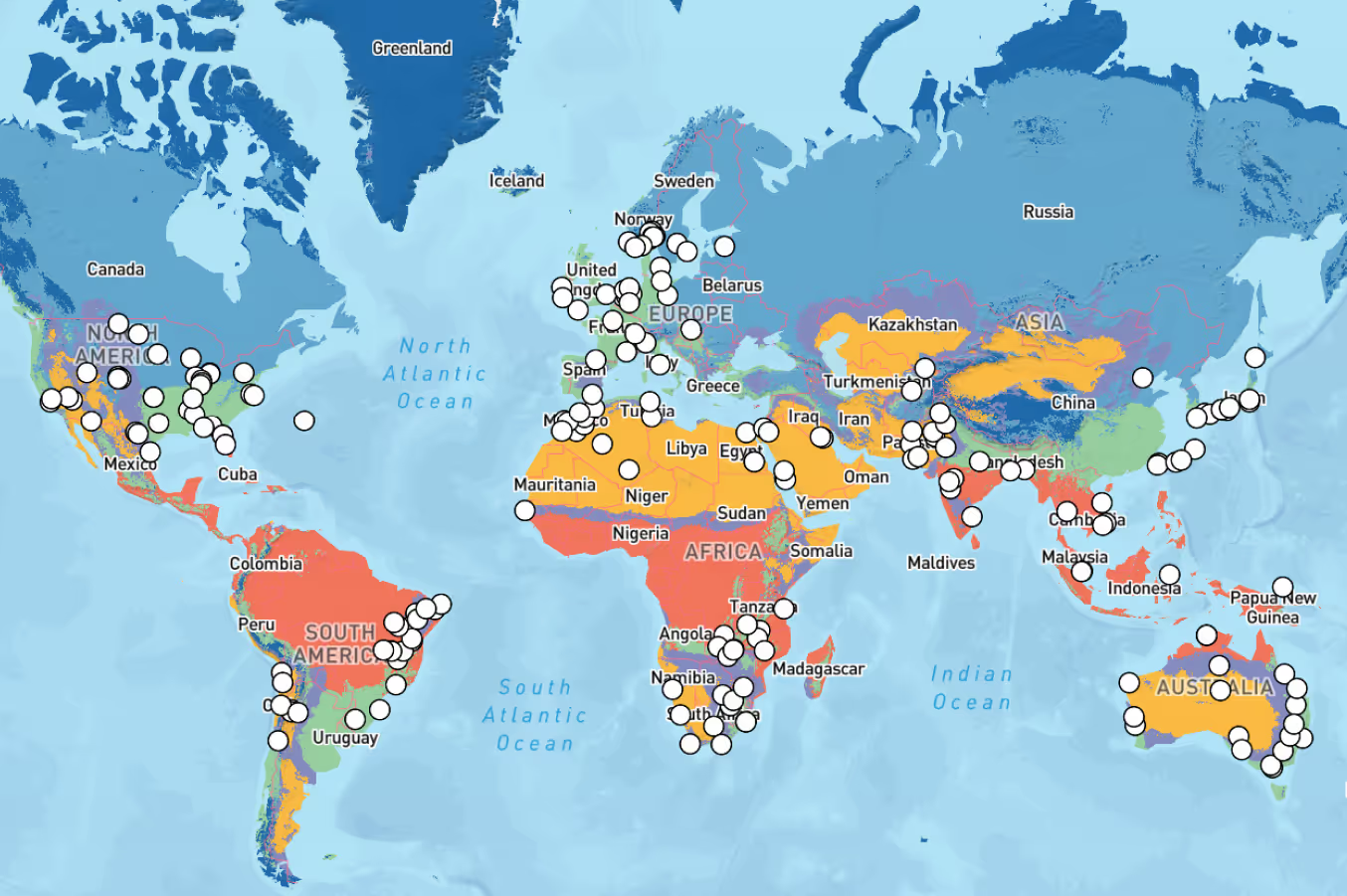
.avif)
